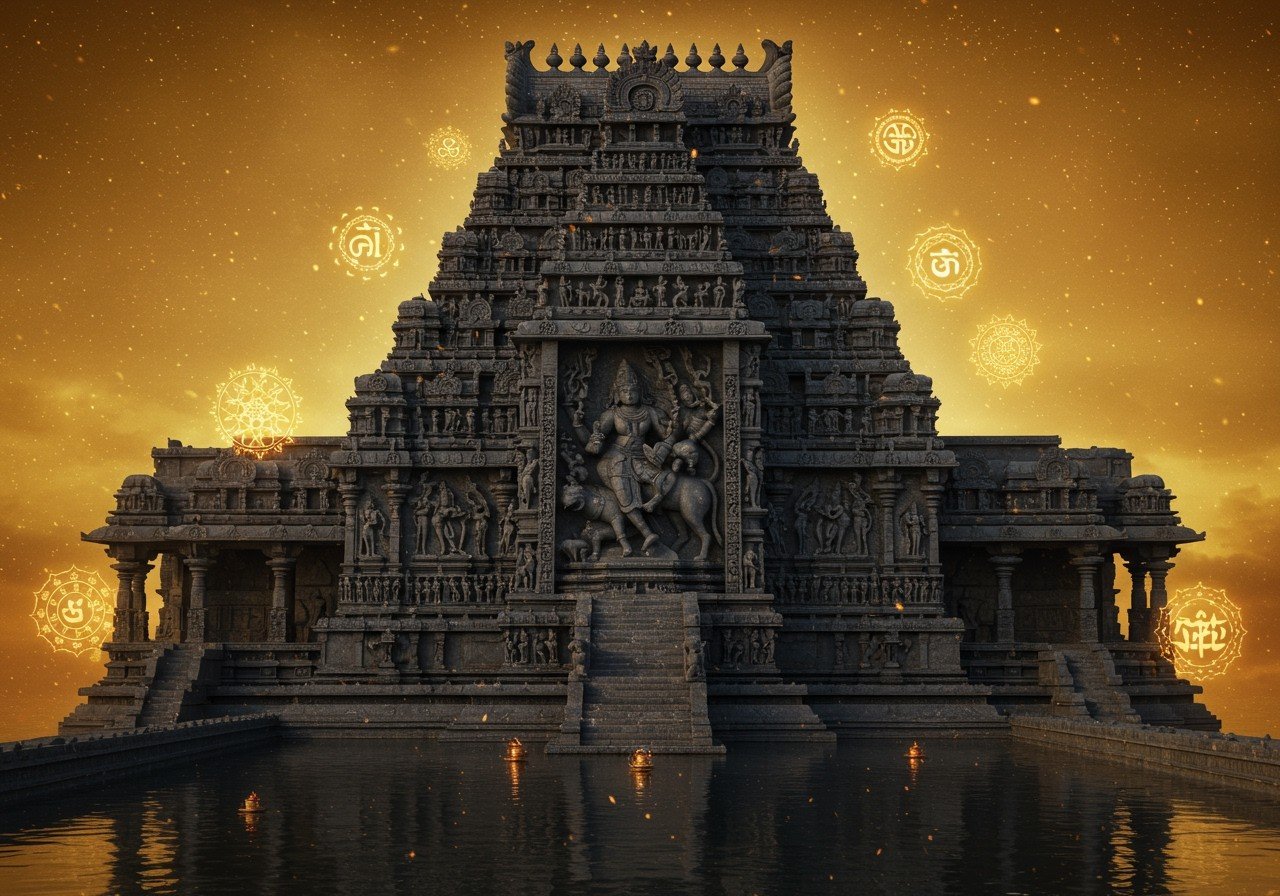Symbols and Significance: Iconography of the Hoysala Empire Explained

The Hoysala Empire, renowned for its rich cultural heritage and architectural brilliance, thrived in Southern India between the 10th and 14th centuries CE. This era witnessed significant artistic and cultural advancements, particularly in the realm of architecture. Hoysala architecture, centered in modern-day Karnataka, particularly the Hassan district, is distinguished by intricate stone carvings and star-shaped temple plans. These temples often feature a sanctum sanctorum (garbhagriha) housing the deity’s image, guiding devotees inward. Vishnu temples are named after the deity, while Shaiva temples showcase the Shiva linga, symbolizing fertility and Shiva.
This blog post delves into the intricate iconography and symbolism embedded within Hoysala architecture, offering a deeper understanding of the empire’s artistic legacy. We will explore the meaning behind the Hoysala emblem, flag, and other key symbols, examining their significance within historical and cultural contexts.
Historical Background of the Hoysala Empire
To truly appreciate the iconography of the Hoysala Empire, understanding its historical context is essential. The Hoysala dynasty originated in Karnataka, rising to power through influential rulers like Vishnuvardhana and Ballala II. These leaders not only expanded the empire but also actively patronized art and architecture. During this period, Hinduism and Jainism flourished, shaping the socio-political landscape and influencing the development of regional art forms and architectural styles. Significant historical events of this era further molded the artistic expressions of the Hoysala period.
The Hoysala Emblem
The emblem of the Hoysala Empire, a powerful symbol reflecting the dynasty’s identity and values, depicts Sala, the legendary founder, engaged in combat with a tiger. In Indian culture, the tiger embodies valor and strength. This emblem serves as a testament to the heroic spirit of the Hoysala rulers. It appeared in various contexts, including official documents, inscriptions, and architectural decorations. The intricate carvings and motifs employed in its creation highlight the exceptional artistic skills prevalent during that period.
The Hoysala Flag
The Hoysala Empire’s flag, another significant symbol with historical weight, incorporates specific colors and motifs representing royal authority and divine protection. Historical records and literary sources offer glimpses into the Hoysala flag and its role in ceremonies and battles. This flag conveyed messages of power, unity, and cultural identity, establishing it as an essential symbol for the Hoysala rulers.
Symbolism in Hoysala Architecture
Hoysala architecture is celebrated for its detailed carvings and profound symbolic meanings. The architectural style encompasses star-shaped platforms, ornate pillars, and sculpted friezes. Key motifs found in Hoysala temples depict deities, mythological scenes, and floral patterns. These symbols reflect the religious beliefs, philosophical concepts, and social values prevalent during the Hoysala period. Temples such as the Chennakesava Temple at Belur and the Hoysaleswara Temple at Halebidu stand as prime examples of this rich architectural symbolism. You can explore more about Hindu temple architecture and sacred sites like Varanasi on poojn.in. Learn about Hindu Temple Architecture and explore Varanasi’s sacred sites.
Frequently Asked Questions about Hoysala Iconography
What is the significance of the Hoysala emblem? The Hoysala emblem, depicting Sala fighting a tiger, symbolizes courage, strength, and the dynasty’s origin story.
What does the Hoysala flag represent? The Hoysala flag, with its distinctive colors and motifs, represents royal authority, divine protection, and the empire’s cultural identity.
What are some common motifs in Hoysala architecture? Common motifs include depictions of deities like Vishnu and Shiva, mythological scenes, floral patterns, and intricate geometric designs. These reflect the religious and philosophical beliefs of the time.
How Poojn.in Connects You to Hoysala Heritage
Poojn.in, India’s leading online store for cultural and religious goods, offers a wide selection of products that resonate with the symbolism found in Hoysala architecture. You can find items such as statues of deities, incense for traditional rituals, and books on Hindu mythology. Explore our Shiva Lingam collection and discover our beautiful Tulsi Malas, connecting you to the spiritual traditions of the Hoysala period and beyond.
Conclusion
The iconography of the Hoysala Empire provides a captivating glimpse into a rich cultural heritage. The intricate emblems, flags, and architectural motifs reflect the valor, religious devotion, and artistic brilliance of this period. By studying and appreciating these symbols, we gain a deeper understanding of the empire’s historical, cultural, and religious context. Preserving the Hoysala legacy ensures that future generations can continue to learn from and be inspired by this remarkable civilization.


